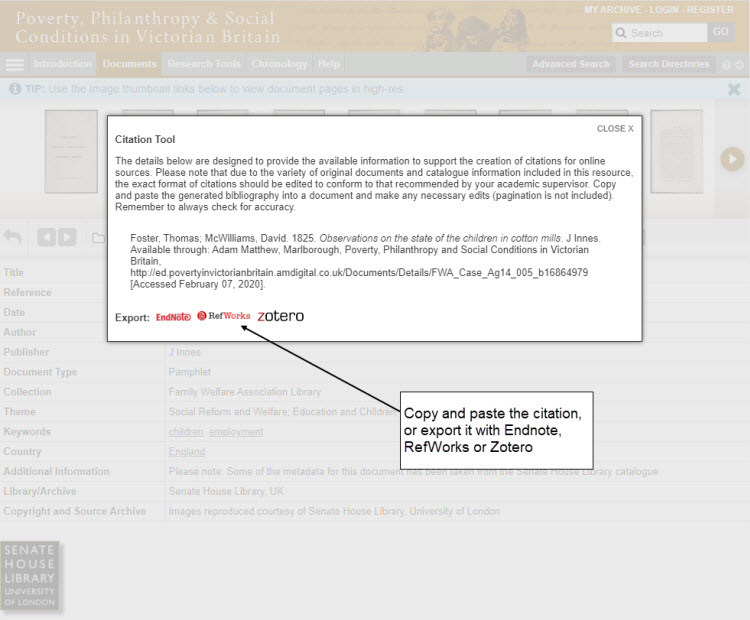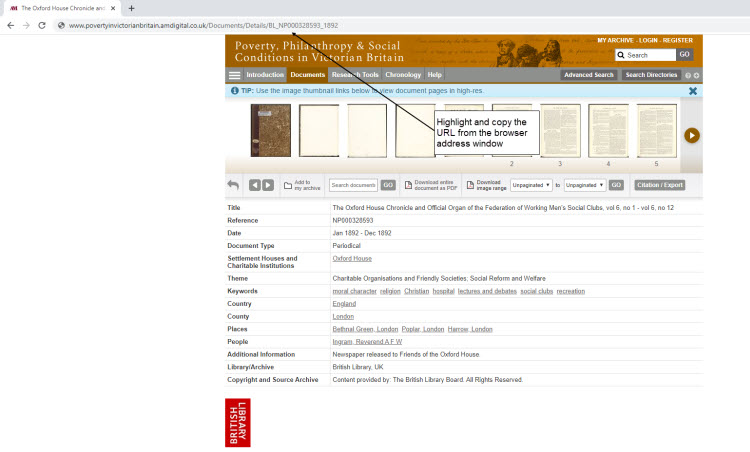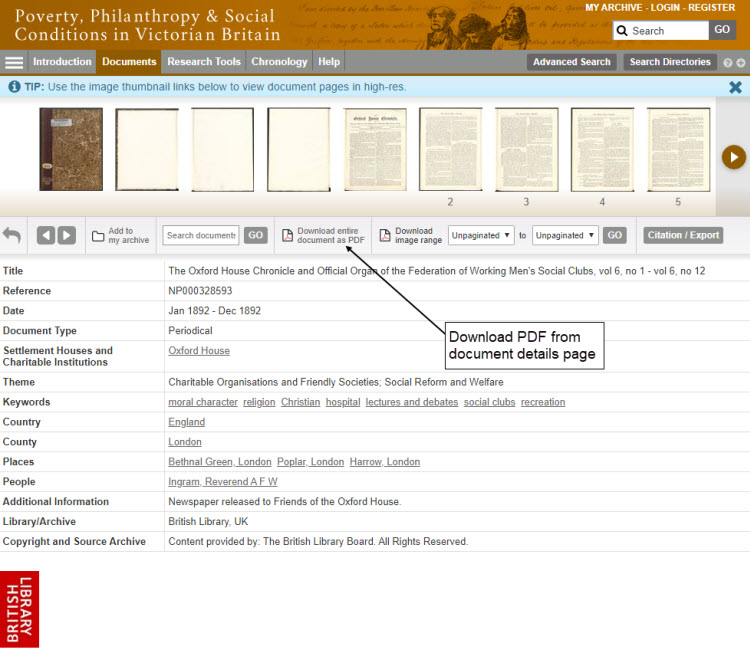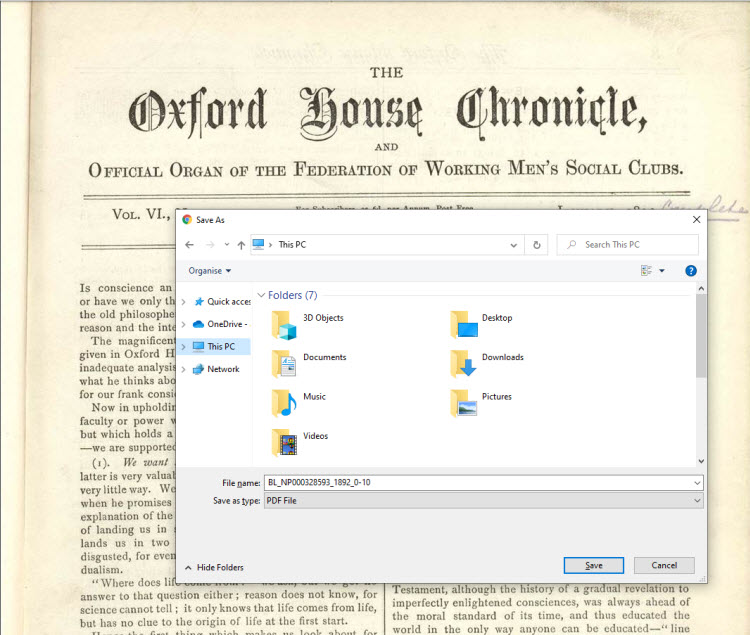Teaching
The first two items illustrate how students can be directed to the materials in the resource, whether via the URL or a downloaded PDF. This is also how material can be shared in teaching software such as Blackboard CourseSites.
Answers to questions regarding fair use and the sharing of images for teaching purposes are included below.
1. Citing a document from the resource
On every Document Details page there is a Citation/Export button below the thumbnail strip. This button opens the Citation Tool, where users can copy the full document citation or export it via RefWorks, EndNote or Zotero.

2. Using a static URL to direct students to individual essays or documents
The URL for any individual document or content page can be copied from the browser address bar.

3. Attach a specific document or documents to an assignment
A. Download PDF from Document Details page
On every Document Details page below the thumbnail strip there is the option to 'Download entire document as PDF'. Users can then choose where to save the PDF once it has downloaded.

B. Save PDF in a convenient location

4. Can I copy an entire document and hold it as a series of image files so that I can use this in the classroom (or add it to my course materials)?
Yes, provided that this is not published by you for profit and full acknowledgment is made of the original source. The purpose of Poverty, Philanthropy and Social Conditions in Victorian Britain is to encourage innovative teaching and to promote the greater use of primary source materials by students.
5. How much material can I copy?
As with all educational resources, this material is subject to fair use restrictions. None of the material may be published without first gaining permission from Adam Matthew and the participating library, museum or archive. However, we encourage you to make use of the images in the classroom with no such restrictions and to link images to your courses.
6. Copyright and permissions
The publisher is grateful to participating libraries, museums and archives for permission to reproduce images of documents in this project. For any further reproduction of these images beyond fair use for educational purposes, the reader should apply to the relevant library or archive directly.
7. Fair use
Images from this collection may be downloaded, printed and photocopied for educational purposes, including course packs. This selection of images is protected by copyright, and duplication or sale of all or part of the image selection is not permitted, except that the images may be duplicated by you for your own research or other approved purposes either as prints or by downloading. Such prints or downloaded records may not be offered, whether for sale or otherwise, to anyone who is not a member of staff of the publisher. You are not permitted to alter any downloaded records without prior permission from the copyright owner. Such permission shall not be unreasonably withheld.
Poverty, Philanthropy and Social Conditions in Victorian Britain © 2020 Adam Matthew Digital Ltd.
Images © [The participating library/archive].
8. Can I use images in my essays?
Yes. Links may be created for essays submitted electronically. Photocopies and printouts of images may be used to accompany printed essay material. Please note copyright and fair use conditions in points 4-7 above.
9. How should students cite documents for scholarly use?
Poverty, Philanthropy and Social Conditions in Victorian Britain provides access to valuable source materials which you may wish to cite in essays and projects. Students should cite items in their footnotes as per the scholarly standard for such citations. Reference should be made to the specific item and the archive holding the original material.
While browsing you can consult the copyright notice at the bottom of the image, which provides details of the copyright/library of origin, the title, date and issue number (if relevant). Students should consult their supervisors for their preferred style (for example, see the MHRA website for a free download of the Style Guide). If you need clarification please ask your academic supervisor.
10. Would you like to know how I am making use of this resource?
Yes, we would be glad to hear from lecturers and students concerning the way in which you are using this material. If there are any difficulties that we can overcome, then we shall try to do so. We may also wish to find a way of alerting others to course materials in this area that are available on the web. Please send any comments to support@amdigital.co.uk.


